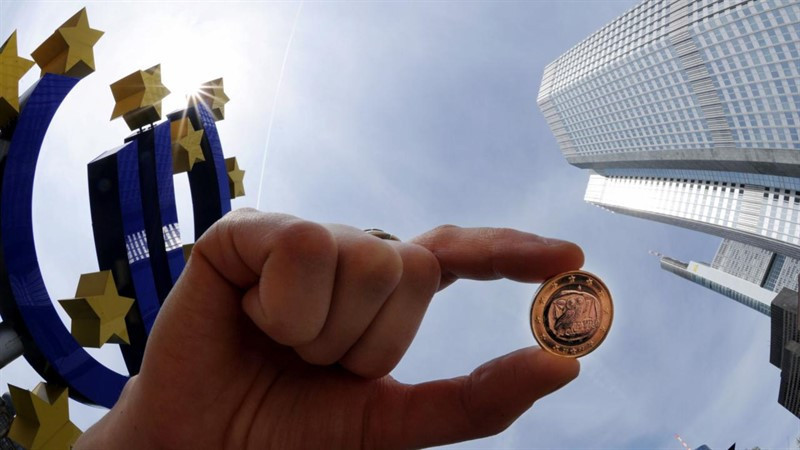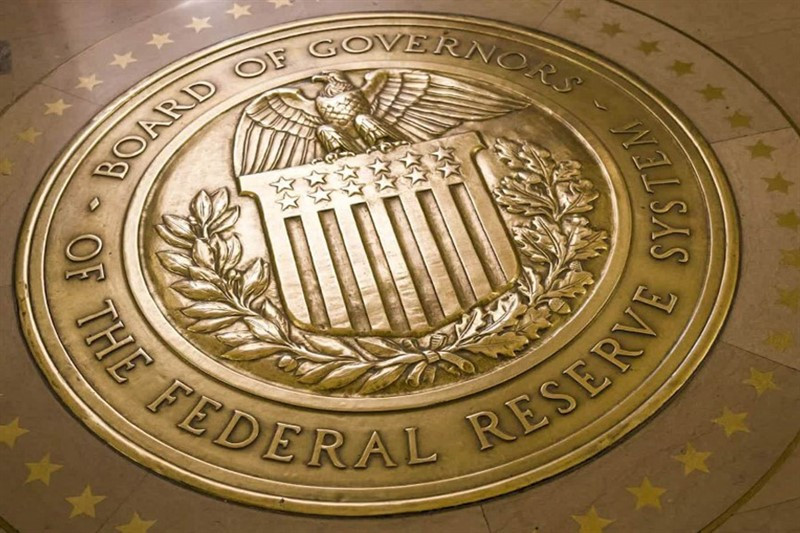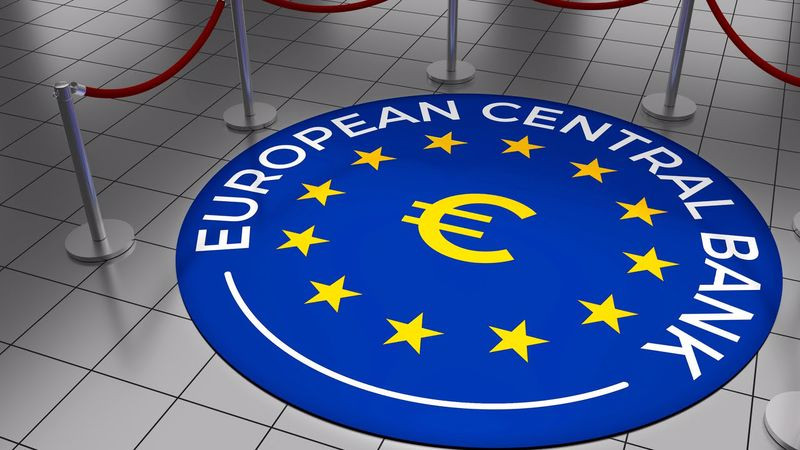
The EUR/USD pair showed its strongest daily gain since June 2016 on Wednesday, surging by about 1.6%. On the previous day, it jumped by more than 170 pips and closed at 1.1075. At the same time, the pair was rising to 1.1090 during the trading session.
Meanwhile, the USD index fell by more than 1%, to 98.00, continuing its slide from an almost two-year high of 99.40 earlier.
On Wednesday, there were no important releases in the U.S. and the eurozone, and markets focused on the situation around Ukraine.
Last week, investors were pricing in the toughest possible scenarios, as prerequisites for a global economic crisis emerged and the threat of a global nuclear disaster loomed on the horizon.
Now, it is as if the markets are saying: Give the world a chance. The latest burst of optimism comes from Moscow's statements that it does not seek to oust Ukraine's government, and its preference remains to resolve disagreements through negotiations. The Kremlin added that it has never threatened and does not threaten NATO.
Ukrainian President Volodymyr Zelensky said that he had refrained from the idea of joining NATO, and was open to dialogue on the future of the DNR and LNR.
Hope for a diplomatic settlement to the conflict allowed risky assets to eliminate oversold conditions and triggered a wave of profit-taking on safe-haven assets.
The single currency strengthened against the US dollar on Wednesday, along with a rebound in stocks.
Yesterday, the world's stock exchanges rallied, recouping a substantial part of recent losses.
The S&P 500 Index ended a streak of declines and jumped by 2.6% to 4,277.88, its biggest one-day gain since June 2020.
"Markets may be moving on from the very acute phase of the shock," TD Securities strategists said, pointing to a weakening of the single currency's negative reaction to the crisis in Ukraine.
A month ago, the euro was close to touching $1.15, and its rapid drop below the $1.10 level, according to some experts, may have been excessive. And now investors are locking in profits on the US currency, as well as some reversal of the EUR/USD pair based on this.
The EUR/USD pair formed a short-term bottom near 1.0806 and made a sharp rebound, heading to the January low at 1.1120-1.1150. If the pair reaches this area, it may push the pair upwards to 1.1235, and 1.1330, according to economists from Societe Generale.
At the same time, some analysts tend to view the current rebound in the euro as a correction and believe that the strengthening of the US dollar will continue after investors' short-term rejection of safe assets. They call expectations of tightening of the Fed's monetary policy as drivers of growth of the US currency.

"DXY could extend its recent retracement if a more favorable Russia-Ukraine diplomatic backdrop continues to develop, though weakness likely does not extend beyond the mid-96s, the Fed likely to stay on a hawkish path," Westpac analysts said.
According to Westpac, the growth of the USD index to 100 and higher looks quite probable in the coming weeks.
As for the EUR/USD pair, it will remain under pressure, being below the level of 1.1100, Westpac strategists say.
"Unless EUR sustains a close above 1.11, the pair is likely to retest the 1.0775-00 area or even 2020's 1.0635-40 low," they noted.
ING analysts do not consider the euro "blatantly undervalued," explaining its recent fall by the divergence of expectations on interest rate hikes by the ECB and the Fed, as well as a significant outflow of funds from the stock markets.
A further energy price shock may well lead to the fall of the single currency to a 2020 low of around $1.0640, they predict.
ING expects the ECB to maintain as much flexibility as possible at its March meeting.
"We think markets have already priced in a cautious tone by President Christine Lagarde this week, and we do not expect a material negative impact on the EUR after the policy announcement," ING experts said.
Another supportive factor for the euro was the expectation that the ECB did not completely change its hawkish sentiment.
According to Rabobank economists, the Russian-Ukrainian conflict has not changed the complex combination of inflation and growth risks, it has only exacerbated it. Therefore, this should not fundamentally change the ECB's plans to cautiously and gradually abandon some adaptive policy measures.
They add that the short-term uncertainty has changed. This may tip the scales toward a slight delay in the timing of ECB normalization, but not a full stop.
"The European Central Bank is likely to make as few policy commitments as possible on Thursday as the shock of Russia's invasion of Ukraine up-ends its expectations for the economy and leaves policymakers grappling with new realities," Reuters reported before the ECB meeting.
The European regulator should give something to the markets to keep the EUR/USD pair on the table, otherwise, we cannot rule out a renewal of 22-month lows due to looming fears of stagflation amid higher oil prices and negative economic sentiment due to the conflict between Moscow and Kyiv.

"In this highly uncertain environment, the ECB is bound to keep maximum flexibility and optionality in all directions, avoiding any firm decisions," Pictet Wealth Management experts said.
MFS Investment Management analysts believe that the Governing Council of the ECB will confirm its intention to wrap up the emergency asset-purchase program (PEPP) in March, but make it clear that in the future it intends to take a wait-and-see attitude and assess how events will unfold.
However, risk perceptions are likely to have a greater impact on the euro's performance against its counterparts than the ECB's statements.
Investors are also waiting for the latest U.S. inflation data today. US consumer prices are forecast to have accelerated to an annualized 7.9% in February from 7.5% a month earlier.
High inflation forces the Fed to raise rates aggressively. In the current environment, the regulator is set for a gradual tightening of monetary policy and has planned to increase the key rate by only 0.25% in March. However, if the rise in oil prices cannot be stopped, there will be no effect from such a rate hike, and inflation will continue to rise. Such an outcome is likely to suit neither the US Central Bank nor the Joe Biden administration. Therefore, the Fed may resort to more decisive actions, despite the threat of slowing economic growth and the risk of falling into stagflation.
In such a scenario, the US dollar will be more favorable compared to the euro.
After Wednesday's impressive growth amid renewed hopes for a de-escalation of the Russian-Ukrainian conflict, the EUR/USD pair started a consolidation phase. On Thursday, it fluctuated in a narrow range within 20 pips.
The USD index is climbing by 0.2% and is trading near 98.20. The greenback remains the more preferred currency amid continued geopolitical tensions around Ukraine.
In addition, investors turned cautious as they awaited the ECB's monetary policy decision and the publication of US inflation data for February.
The initial resistance for the EUR/USD pair is around 1.1090-1.1100. In case it rises above this area and starts to use it as support, the next target for the bulls will be at 1.1160 where the 100-day MA is located.
On the other hand, support is at 1.1040 (50-day MA), and further support is at 1.1000 (38.2% Fibonacci retracement level) and 1.0950 (20-day MA).





















